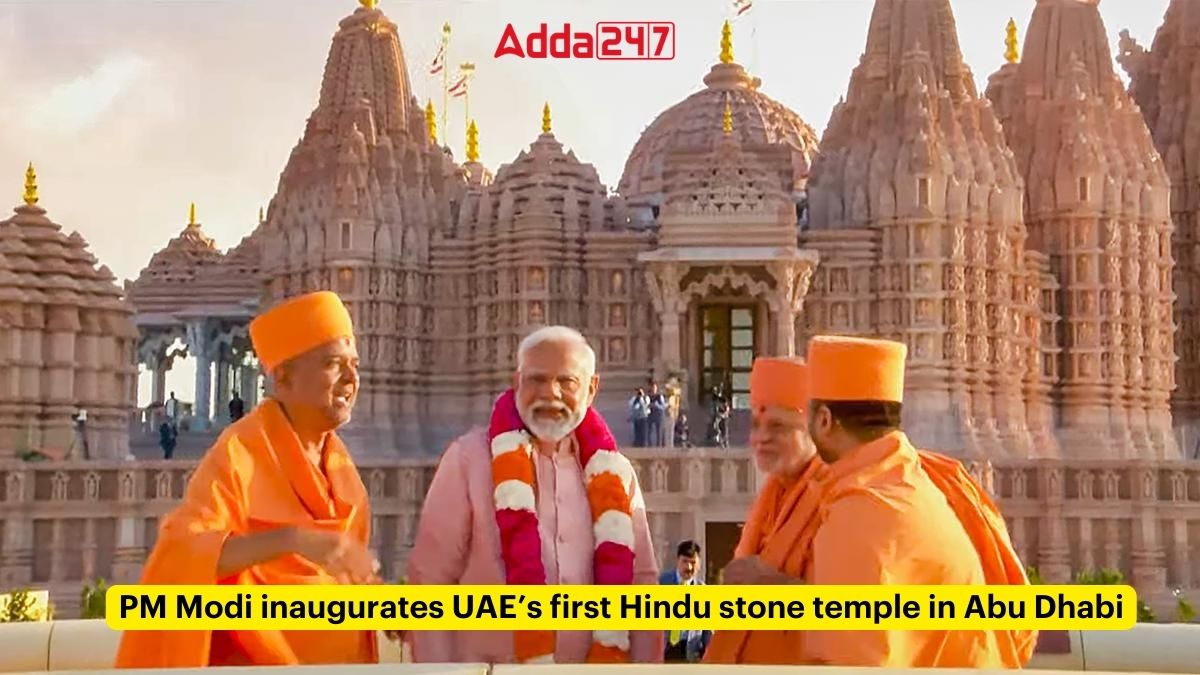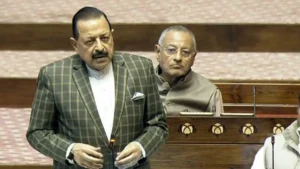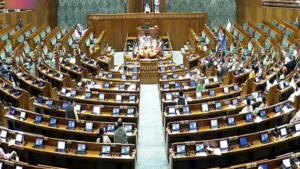In a historic event on February 14, Prime Minister Narendra Modi inaugurated Abu Dhabi’s first Hindu stone temple, marking a significant milestone in the UAE’s cultural and religious inclusivity. The inauguration ceremony was imbued with devotional chants and witnessed the presence of spiritual leaders from the Swaminarayan sect, highlighting the temple’s importance to the global Hindu community.
Global Aarti: A Spiritual Unison
A highlight of the event was the “Global Aarti,” performed simultaneously at over 1,200 temples of the Swaminarayan sect worldwide. This act of global spiritual unity was orchestrated by the Bochasanwasi Shri Akshar Purushottam Swaminarayan Sanstha (BAPS), illustrating the widespread reverence and support for the newly inaugurated temple.
A Meeting of Faiths
Prior to the inauguration, Prime Minister Modi engaged with individuals from various faiths who played a crucial role in the temple’s construction, emphasizing the collaborative spirit that underpinned the project. This interaction underscored the temple’s ethos of unity and the bridging of cultural divides.
Temple Architecture: A Blend of Tradition and Technology
Located on a 27-acre site near Al Rahba off the Dubai-Abu Dhabi Sheikh Zayed Highway, the temple was constructed at a cost of approximately Rs 700 crore. It stands as a testament to ancient architectural principles derived from Hindu scriptures, the Shilpa and Sthapathya Shastras, which guide mandir design and construction. The temple’s architecture harmonizes traditional methods with modern scientific techniques, incorporating over 300 high-tech sensors to monitor temperature, pressure, and seismic activity. This innovative approach allows for ongoing research and ensures the temple’s safety and sustainability.
Eco-Friendly Construction
Remarkably, the temple’s construction involved no metal use, with fly ash replacing a significant portion of cement in the concrete mix, thereby reducing the carbon footprint. The use of heat-resistant nano tiles and heavy glass panels merges traditional aesthetics with modern functionality, catering to the UAE’s extreme temperatures and ensuring visitor comfort.
Craftsmanship and Global Collaboration
Constructed in the Nagara style of architecture, similar to the Ram Temple in Ayodhya, the temple required 18 lakh bricks, seven lakh man-hours, and 1.8 lakh cubic metres of Rajasthan-sourced sandstone. The intricate carvings and the marble used in the interiors, mined from Italy and carved in India, showcase the global effort and craftsmanship invested in the temple’s creation.
A Landmark of Hindu Faith in the Gulf
The temple’s establishment, supported by the land donated by the UAE government, marks a new era for the Hindu community in the Gulf region. It joins three other Hindu temples in Dubai but stands out for its size and traditional stone architecture, symbolizing a significant cultural and religious landmark.
Prime Minister Modi’s UAE Visit
This visit, Prime Minister Modi’s seventh to the UAE since 2015 and his third in the last eight months underscores the deepening ties between India and the UAE. The inauguration of the temple during this visit highlights the mutual respect and acknowledgement of cultural and religious diversity between the two nations.
The Abu Dhabi Hindu temple not only serves as a place of worship but also as a beacon of cultural harmony, architectural innovation, and environmental consciousness. It signifies the growing inclusivity within the UAE and strengthens the bond between India and the Emirates, promising a future of shared values and mutual respect.
Important takeaways for all competitive exams:
- UAE Capital: Abu Dhabi;
- UAE Currency: United Arab Emirates Dirham;
- UAE Prime Minister: Mohammed bin Rashid Al Maktoum;
- UAE President: Mohammed bin Zayed Al Nahyan.




 Prime Minister Releases Commemorative Po...
Prime Minister Releases Commemorative Po...
 Parliament Passes SHANTI Bill, AERB Gets...
Parliament Passes SHANTI Bill, AERB Gets...
 Viksit Bharat G RAM G Bill Passed in Lo...
Viksit Bharat G RAM G Bill Passed in Lo...







